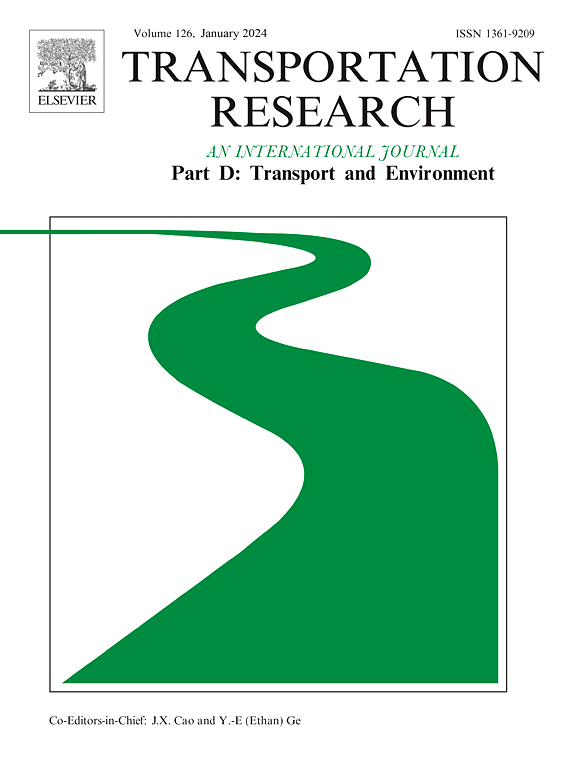热带气旋对集装箱航运网络的影响:台风 "梅安"(2022 年)案例研究
IF 7.3
1区 工程技术
Q1 ENVIRONMENTAL STUDIES
Transportation Research Part D-transport and Environment
Pub Date : 2024-10-04
DOI:10.1016/j.trd.2024.104449
引用次数: 0
摘要
随着气候变化的加剧,热带气旋给集装箱航运网络(CSN)带来了越来越大的挑战。然而,该领域的相关研究仍然不足。在本研究中,我们利用超过 7.76 亿个自动识别系统(AIS)轨迹信号分析了台风 "麦安 "对 CSN 的影响。我们的研究结果表明,台风不仅改变了 CSN 的网络结构,还影响了集装箱港口的重要性、船舶流量和航运路线上的行程距离波动。台风过后,网络的连通性和稳定性以及旅行时间波动的恢复情况不如其他方面强劲。此外,港口重要性、船舶流量和旅行距离波动的影响范围分别为 1,750 千米、500 千米和 2,250 千米,呈反向距离衰减模式。这些发现为利益相关方提高防灾减灾政策的有效性提供了新的见解。本文章由计算机程序翻译,如有差异,请以英文原文为准。
The effects of tropical cyclone on the container shipping network: A case study of typhoon Ma-on (2022)
As climate change intensifies, tropical cyclones pose increasing challenges to container shipping networks (CSN). However, research related in this area remains insufficient. In this study, we analyzed the effects of Typhoon Ma-on on the CSN using over 776 million Automatic Identification System (AIS) trajectory signals. Our findings reveal that the typhoon not only altered the network structure of the CSN but also affected the importance of container ports, vessel flow, and travel distance fluctuations along shipping routes. After the typhoon, the recovery of the network’s connectivity and stability, as well as travel time fluctuations, was less robust compared to other aspects. Additionally, the impact ranges for port importance, vessel flow, and travel distance fluctuations were 1,750 km, 500 km, and 2,250 km, respectively, following an inverse distance decay pattern. These findings offer new insights for stakeholders to enhance the effectiveness of disaster prevention and mitigation policies.
求助全文
通过发布文献求助,成功后即可免费获取论文全文。
去求助
来源期刊
CiteScore
14.40
自引率
9.20%
发文量
314
审稿时长
39 days
期刊介绍:
Transportation Research Part D: Transport and Environment focuses on original research exploring the environmental impacts of transportation, policy responses to these impacts, and their implications for transportation system design, planning, and management. The journal comprehensively covers the interaction between transportation and the environment, ranging from local effects on specific geographical areas to global implications such as natural resource depletion and atmospheric pollution.
We welcome research papers across all transportation modes, including maritime, air, and land transportation, assessing their environmental impacts broadly. Papers addressing both mobile aspects and transportation infrastructure are considered. The journal prioritizes empirical findings and policy responses of regulatory, planning, technical, or fiscal nature. Articles are policy-driven, accessible, and applicable to readers from diverse disciplines, emphasizing relevance and practicality. We encourage interdisciplinary submissions and welcome contributions from economically developing and advanced countries alike, reflecting our international orientation.

 求助内容:
求助内容: 应助结果提醒方式:
应助结果提醒方式:


